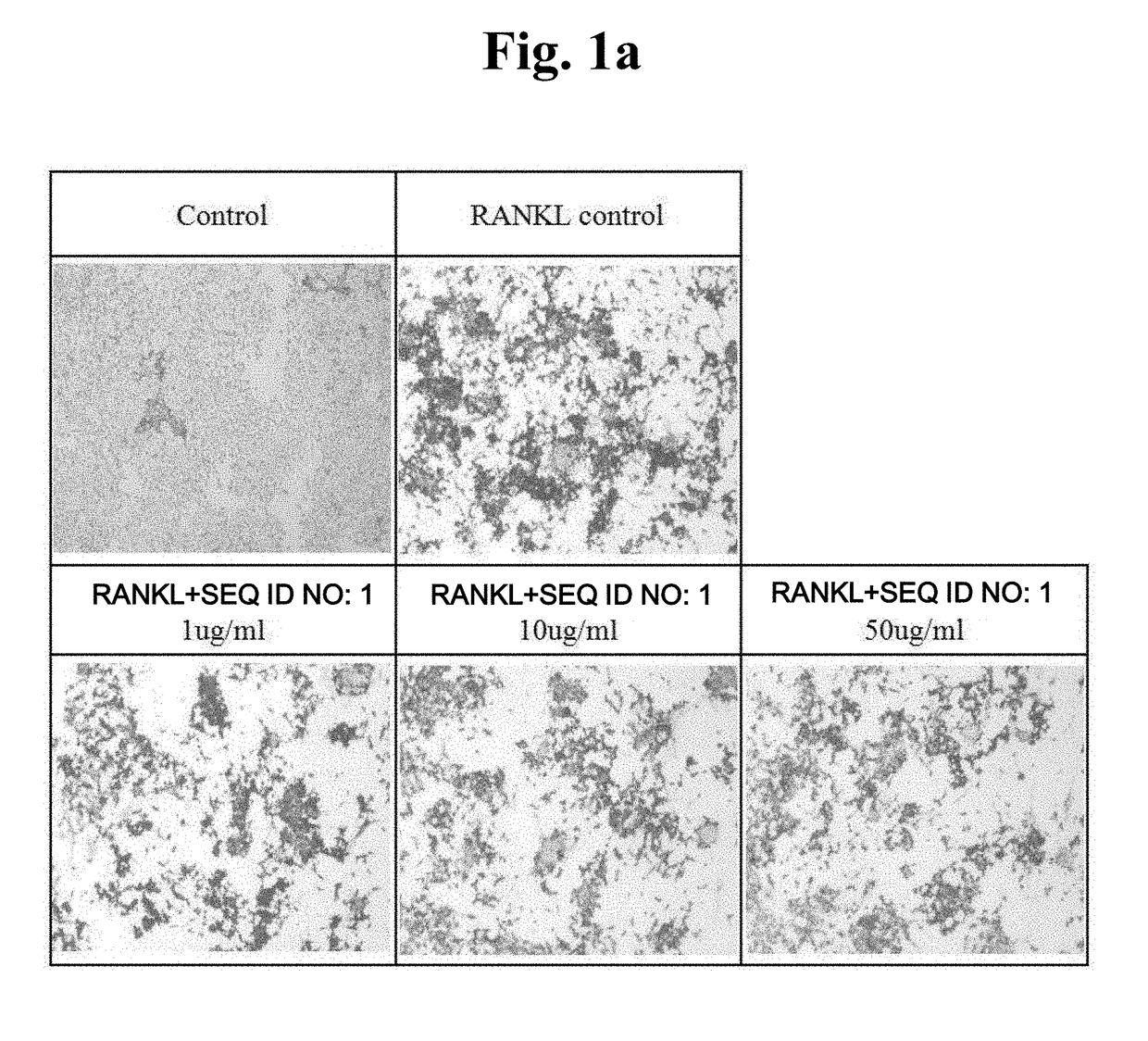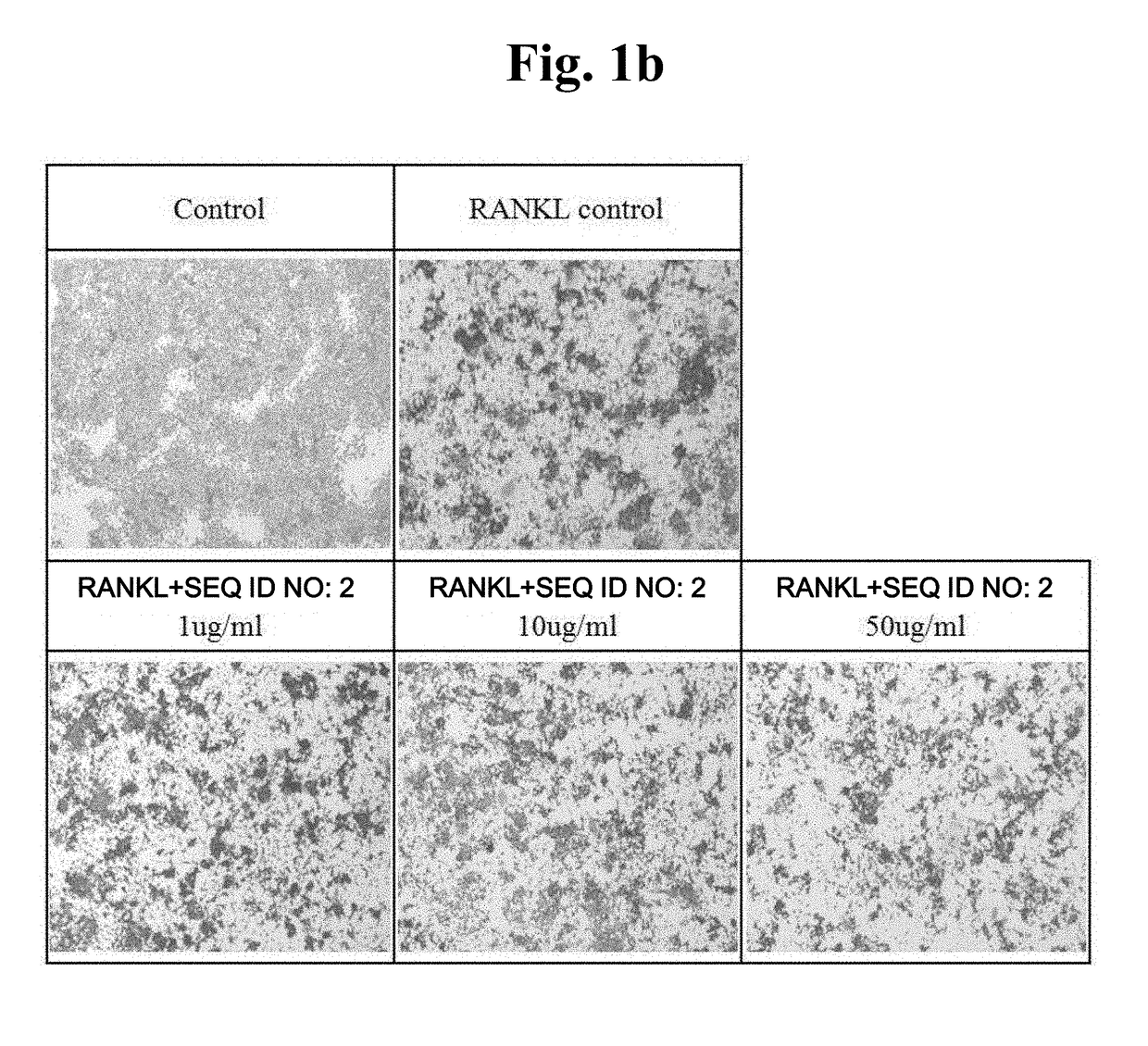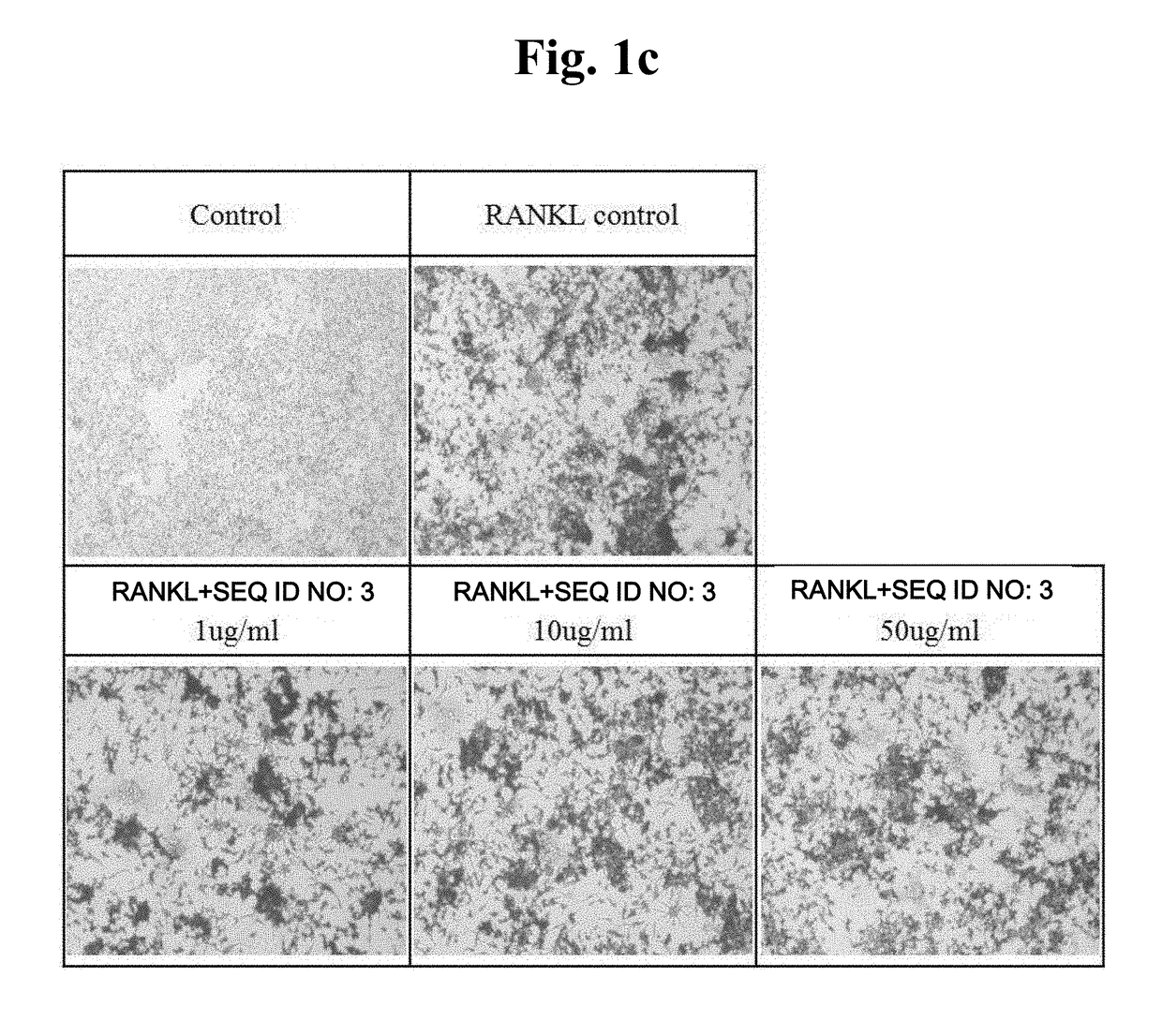Peptide having osteoclast differentiation and activation inhibition, and use of same
a technology of osteoclasts and peptides, which is applied in the direction of peptides/protein ingredients, drug compositions, peptides, etc., can solve the problems of bone progressing to a state where it can easily fracture, bone resorption, and microstructure becoming thinner and weakened, so as to inhibit the nuclear translocation of nf-b, inhibit the expression of nf-b, and prevent or treat bone disease.
- Summary
- Abstract
- Description
- Claims
- Application Information
AI Technical Summary
Benefits of technology
Problems solved by technology
Method used
Image
Examples
synthesis example 1
[0047]700 mg of chloro trityl chloride resin (CTL resin, Nova Biochem Cat No. 01-64-0021) was put into a reaction container, and 10 ml of methylene chloride (MC) was added, followed by stirring for 3 minutes. After the solution was removed, 10 ml of dimethylform amide (DMF) was added, followed by stirring for 3 minutes, and then the solvent was again removed. 10 ml of a dichloromethane (DCM) solution was added into the reactor, and 200 mmole Fmoc-Arg(Pbf)-OH (Bachem, Swiss) and 400 mmole diisopropyl ethylamine (DIEA) were added, after which the mixture was well dissolved with stirring, followed by reaction with stirring for 1 hour. After the reaction, washing was conducted. Then, methanol and DIEA (2:1) were dissolved in DCM, followed by reaction for 10 minutes, and then washing was conducted with excessive DCM / DMF (1:1). After the solution was removed, 10 ml of DMF was added, followed by stirring for 3 minutes, and then the solvent was again removed. 10 ml of a deprotection solutio...
example 1
ning
[0051]An attempt was made to verify the level of TRAP protein expressed during osteoclast differentiation through staining and observe the reduction tendency thereof during the treatment with peptides.
[0052]Raw 264.7 macrophages were seeded in a 48-well plate at 1×104 cells / well, and at the same time, treated with peptides with different concentrations (peptide alone or together with 50 ng / ml RANKL), and incubated for 5 days to induce differentiation. TRAP staining was conducted using the acid phosphatase kit (Sigma Aldrich). The fixation buffer was added, followed by reaction for 30 seconds and washing with distilled water. A staining solution was added at 200 ul per well, followed by reaction at 37° C. for 30 minutes and washing with distilled water. The resulting product was dried for one day, and then observed using a microscope.
[0053]It was observed that, when compared with a control group in which osteoclast differentiation was induced by RANKL treatment to increase TRAP e...
example 2
TRAP and Cathepsin K
[0054]An attempt was made to verify the mRNA levels of TRAP and Cathepsin K expressed during osteoclast differentiation through RT-PCR and to observe the reduction tendencies thereof during the treatment with peptides were observed.
[0055]Raw 264.7 cells were seeded in a 48-well plate at a cell density of 1×104 cells / well. The cells were treated with 50 ng / ml RANKL and peptides with different concentrations (10 and 50 ug / ml), and incubated for 5 days in an incubator. After the incubation-completed cells were collected, the cells were treated with RNA extraction solution (Easy Blue, Intron) to prepare RNA, and then cDNA was synthesized using RT premix (Intron). PCR was carried out using primers with respect to respective markers (Cathepsin K and TRAP) and PCR premix (Intron). Then, 5 μl of PCR products were loaded on 1% agarose gel, followed by electrophoresis, and then the bands were investigated using Gel-Doc. It was observed that the expressions of TRAP and Cath...
PUM
| Property | Measurement | Unit |
|---|---|---|
| total volume | aaaaa | aaaaa |
| concentrations | aaaaa | aaaaa |
| concentrations | aaaaa | aaaaa |
Abstract
Description
Claims
Application Information
 Login to View More
Login to View More - R&D
- Intellectual Property
- Life Sciences
- Materials
- Tech Scout
- Unparalleled Data Quality
- Higher Quality Content
- 60% Fewer Hallucinations
Browse by: Latest US Patents, China's latest patents, Technical Efficacy Thesaurus, Application Domain, Technology Topic, Popular Technical Reports.
© 2025 PatSnap. All rights reserved.Legal|Privacy policy|Modern Slavery Act Transparency Statement|Sitemap|About US| Contact US: help@patsnap.com



